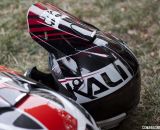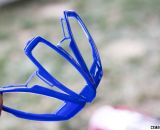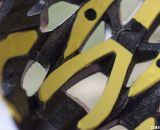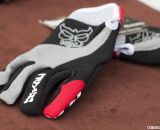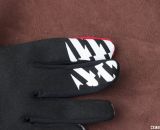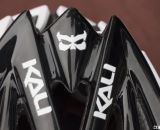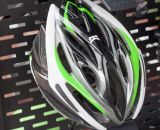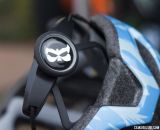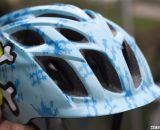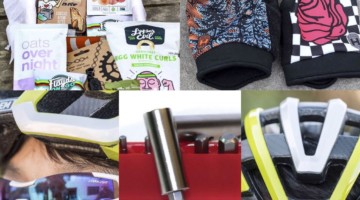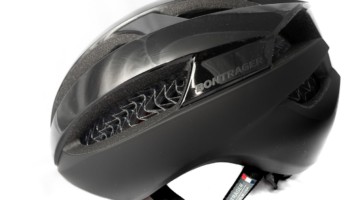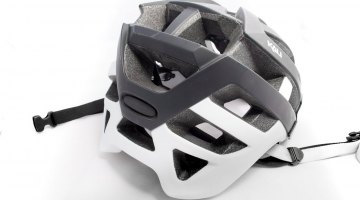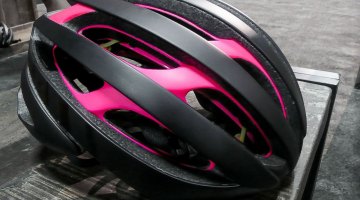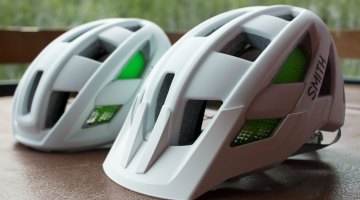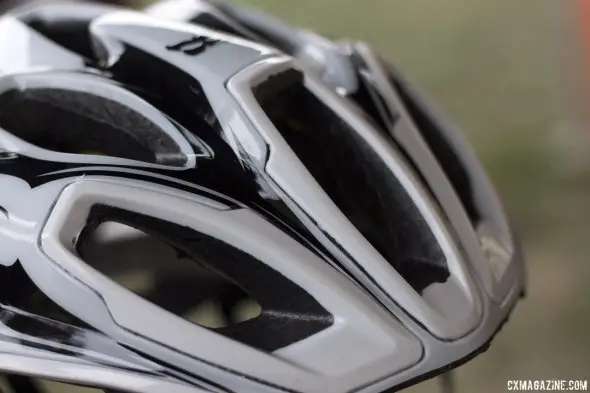
Kali Protectives’ top-of-the-line $189 Maraka helmet, with SuperVent and Composite Fusion Plus technology, Winter Press Camp. © Cyclocross Magazine
Kali’s Composition Fusion Plus technology is the third way the company maintains it can protect you on impact. While SuperVent protects you in impacts near the particular reinforced vents, Composite Fusion Plus should help protect regardless of the location of the impact. Kali combines two different densities of foam, with one low density foam integrating cone-shaped structures embedded into another lower density layer of foam. These cone-shaped structures, originating from an Australian physicist’s invention, are the key to absorbing the energy of a crash.
The cones crush in an impact, transferring the direction of energy from a linear motion (towards your brain) to send it laterally, away from your head. Waldron said their first version used conical shapes, but now Kali uses a three-sided pyramid shape (tetrahedron). Kali says they were the first to use this cone technology, but other companies are following their lead.
The company also uses memory foam (called Bumper Fit System) to absorb smaller impacts, but found that the foam is also extremely useful in providing a better fit by reducing hotspots and accommodating more head shapes.
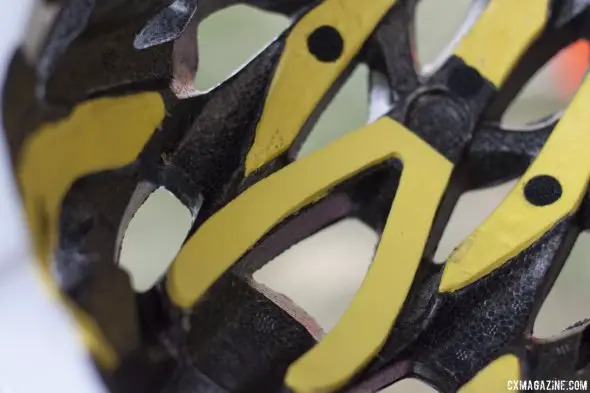
Kali Protectives uses memory foam for its Bumper Fit lining, which was added for low-impact protection but helps fit more head shapes by conforming to more heads. Winter Press Camp. © Cyclocross Magazine
Kali Protective offers three road helmets: the $189 Maraka, and just-launched $159 Phenom and $99 Loka, which all incorporate the Composite Fusion Plus and Bumper Fit systems, and the Maraka XC MTB helmet and the Avana endure helmet also feature these technologies (as well as some of the downhill and motorcycle models). Some of the lower price point models do not.
Kali has quietly expanded its line to offer shops helmets for any cyclist and budget. They now offer 15 non-full face bike helmets including a $25 child’s helmet, and also have snow and motorcycle helmets along with gloves and other protective gear like elbow pads and back protectors. The one thing they don’t offer is a woman-specific helmet. “We don’t do a female-specific helmet, because no matter what they tell you, women’s heads aren’t shaped different [from men’s],” said Bryan Mason, National Sales Manager for Kali. However, their closure systems are ponytail compatible and there are some colors and graphics that women may gravitate to.
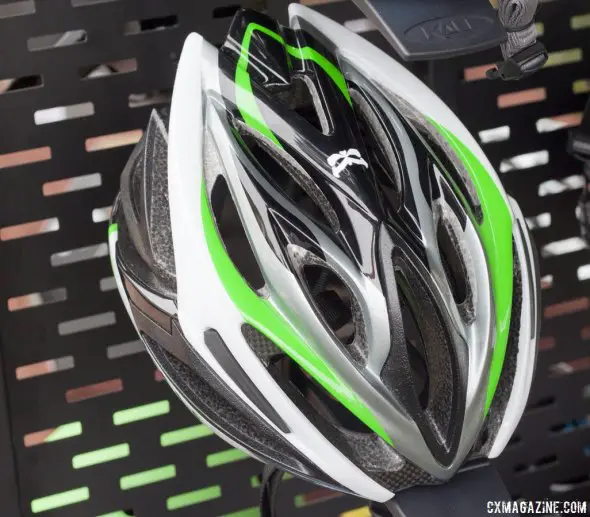
Kali Protectives just-released mid-range Phenom helmet, at $159, adds SuperVent technology and a dial for fit. Winter Press Camp. © Cyclocross Magazine
The top-end Maraka and Maraka XC (adds a visor) aren’t brand-new models, but were designed with a cyclocrosser in mind, said Mason. What makes them designed for a cyclocrosser? “It’s lightweight, [has good] ventilation, and is styled for a guy who wears lycra but rides dirt,” said Mason. Basically, a helmet that looks like a cross between a roadie helmet and a mountain bike helmet.
I’ve spent a few rides in a Maraka helmet, and am impressed—partially because I never noticed I was wearing something new. The M/L size, with the Dual Closure System and Bumper Fit pads, easily adapted to my head, had straps that were easy to adjust and more importantly, kept their adjustment positions and didn’t slip. On a group mountain bike ride, despite chasing fully-suspended mountain bikers on a fully rigid cyclocross bike, the helmet didn’t rattle or slip, and absorbed my sweat on a balmy Southern California afternoon.
Mason said that the top-of-the-line Maraka has so much technology built into the design that it takes “45 minutes just to make two, with a high rejection rate.” The trouble seems worth it though, as the result is a light, comfortable helmet. My M/L model weighed 288g.
Helmet weight isn’t just something weight weenies should pay attention to, Waldron emphasizes, citing the Force = Mass x Acceleration equation as logic for keeping helmet weight to a minimum. “Your head is a swinging pendulum, and you don’t want to add unnecessary weight,” Waldron said.
Helmet technology is hard to verify, in more ways than one. Thankfully I didn’t need to test the Maraka’s protection abilities during the few rides I’ve worn it, hopefully you won’t need to either, but we wear helmets to protect us from the inevitable. After slamming my head into the head-high barrier at SSCXWC 2012, and suffering a crash-related brain injury a few months later, I’m inclined to keep this at the front of the line for my riding. Stay tuned for a longer-term test.
More info: kaliprotectives.com















